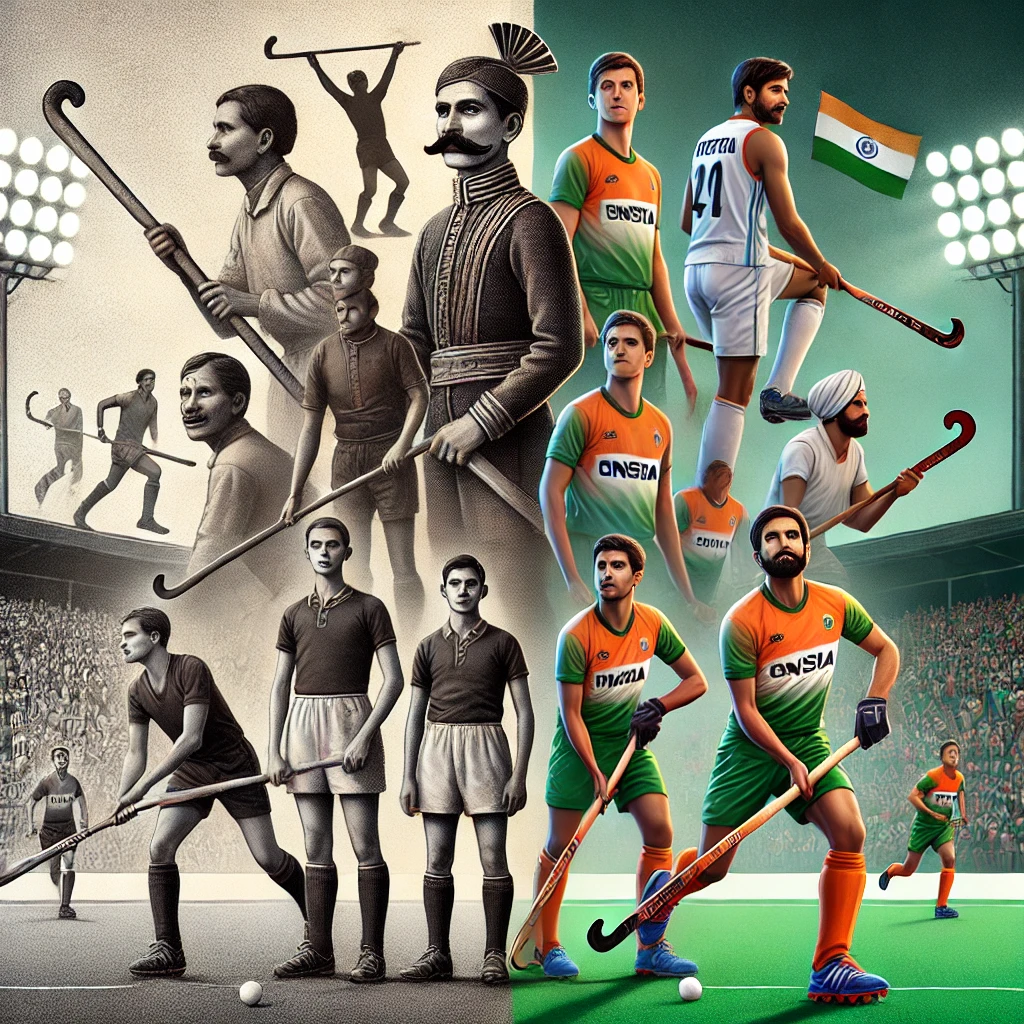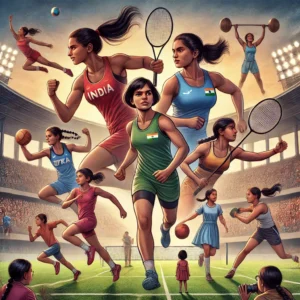Field hockey holds a special place in India’s sporting history, symbolizing the country’s early dominance on the international stage. Introduced during British colonial rule, field hockey quickly became a popular sport across the subcontinent, eventually establishing India as a global powerhouse. With a rich legacy marked by Olympic gold medals and legendary players, field hockey was once the pride of the nation. However, despite its storied past, the sport has faced numerous challenges over the years, leading to a decline in its prominence. Today, efforts are being made to revive India’s status in the world of field hockey, balancing respect for tradition with modern strategies to improve the game’s reach and appeal.
The Origins of Field Hockey in India
The origins of field hockey in India date back to the late 19th century when the sport was introduced by British soldiers and officers stationed in the country. As the British established their colonial rule, they brought along their sports and pastimes, including hockey. Initially, the sport was played among British troops and expatriates, but it quickly spread to Indian soldiers and civilians, who embraced it with enthusiasm.
By the early 20th century, field hockey had become popular in many regions of India, particularly in states like Punjab, Maharashtra, and Odisha. Indian players began forming local teams and participating in regional tournaments, often competing against British teams. This period laid the foundation for India’s rise as a formidable force in field hockey. The sport’s appeal grew further with the establishment of formal clubs and associations, including the Indian Hockey Federation (IHF) in 1925, which played a pivotal role in organizing the game at the national level.
The turning point for Indian hockey came in 1928 when India participated in its first Olympic Games in Amsterdam. Despite being relatively new to the international scene, the Indian team, led by the legendary Dhyan Chand, dominated the competition and won the gold medal without conceding a single goal. This victory marked the beginning of India’s golden era in field hockey, capturing the imagination of the nation and earning respect worldwide.
Throughout the 1930s and 1940s, India continued to excel in international tournaments, securing multiple Olympic gold medals and establishing itself as the team to beat. The country’s style of play, characterized by speed, skillful dribbling, and precise passing, became a hallmark of Indian hockey. The sport’s popularity reached new heights, and it became a source of national pride, symbolizing India’s emerging identity on the global stage during the struggle for independence.
The roots of field hockey in India are thus deeply intertwined with the country’s colonial history and the journey towards independence. The early achievements laid the groundwork for decades of success, setting the stage for what would become a historic period of dominance in the sport.
Golden Era of Indian Field Hockey
The golden era of Indian field hockey began with the team’s debut at the 1928 Amsterdam Olympics, where they won their first gold medal, marking the start of a historic winning streak. Under the leadership of Dhyan Chand, widely regarded as one of the greatest players in the history of the sport, India dominated the field hockey world for decades.
Dominance in the Olympics
Between 1928 and 1956, India won six consecutive Olympic gold medals in field hockey, establishing a legacy that remains unmatched. The Indian team’s victories during this period were characterized by their impeccable skill, strategic gameplay, and an almost unbeatable defense. The team’s dominance at the Olympics made India synonymous with field hockey, and their performance inspired millions of Indians to take up the sport.
Legendary Players and Coaches
The golden era produced several iconic players, with Dhyan Chand being the most celebrated. Known as the “Wizard of Hockey,” Dhyan Chand’s dribbling skills and scoring ability mesmerized audiences across the world. Other notable players of this era included Balbir Singh Sr., who played a crucial role in India’s Olympic victories in 1948, 1952, and 1956, and Kishan Lal, a respected captain and mentor. Coaches like Harbail Singh also played a significant role in shaping the team’s strategic approach during this period, ensuring that India remained at the top of international hockey.
Key Victories and Records
The Indian field hockey team’s golden era was marked by numerous memorable victories and records. In the 1936 Berlin Olympics, India defeated Germany 8-1 in the final, with Dhyan Chand scoring three goals, a performance that solidified his status as a legend. The 1948 London Olympics was especially significant as it was India’s first Olympic appearance after gaining independence. The team’s gold medal victory was seen as a symbol of the new nation’s strength and resilience. During this time, India also dominated other international tournaments, winning multiple Asian Games titles and prestigious trophies like the Beighton Cup and the Aga Khan Cup.
The golden era of Indian field hockey was more than just a period of victories; it represented a time when the sport became an integral part of India’s national identity. The achievements of this era continue to be a source of pride and inspiration, reminding the country of its glorious past in the world of field hockey.
Decline and Challenges Faced by Indian Field Hockey
Despite the glory of its golden era, Indian field hockey began to decline in the late 1960s and 1970s, facing multiple challenges that led to a loss of its dominance on the global stage.
- Loss of Global Dominance: As other countries, particularly those in Europe and Australia, began to adopt a more structured and scientific approach to the sport, India struggled to keep up. The introduction of new playing styles, such as the European emphasis on physicality and long passing, contrasted with India’s traditional dribbling game, making it difficult for Indian players to compete effectively.
- Emergence of Synthetic Turf and Adaptation Challenges: One of the most significant factors contributing to India’s decline in field hockey was the transition from natural grass to synthetic turf in international tournaments. The faster playing surface of synthetic turf required adjustments in speed, technique, and physical conditioning. India, lacking the infrastructure for synthetic turf training, found itself at a disadvantage compared to countries with better facilities and resources.
- Lack of Infrastructure and Funding: As cricket grew to become the most popular sport in India, field hockey suffered from a lack of investment. The decline in funding meant that many young players had limited access to quality coaching, training facilities, and competitive exposure. In contrast, countries like the Netherlands, Germany, and Australia made significant investments in developing their field hockey programs, further widening the gap between India and its competitors.
- Competition from Other Sports like Cricket: The meteoric rise of cricket in India, particularly after the 1983 World Cup win, shifted the focus of sports fans, sponsors, and the media away from field hockey. With cricket capturing the nation’s attention, field hockey struggled to maintain its popularity and relevance among younger generations. This shift in interest made it harder for hockey to attract sponsorships and television coverage, which are crucial for the sport’s growth.
The decline in Indian field hockey was a complex process influenced by both external changes in the sport and internal challenges. Despite these difficulties, efforts have been made in recent years to revive the sport and restore its former glory, with a renewed focus on building infrastructure, developing talent, and regaining a competitive edge.
The Current State of Field Hockey in India
The current state of field hockey in India is a blend of optimism and ongoing challenges, with various efforts underway to revitalize the sport and regain its position on the global stage.
- Revival Efforts by Hockey India and Other Organizations
Hockey India, the sport’s governing body, has played a key role in reviving Indian field hockey. It has focused on grassroots development, providing training programs for young players and organizing domestic leagues to promote competitive play. These initiatives have helped identify and nurture new talent, creating a pipeline for future stars. - Growth of the Hockey India League (HIL)
The launch of the Hockey India League (HIL) in 2013 provided a much-needed boost to the sport. The HIL attracted international players and coaches, offering Indian players the chance to compete at a high level and learn from global talent. The league also generated media attention, bringing field hockey back into the public eye and rekindling interest among fans. - Recent Achievements in International Tournaments
India has made significant progress in recent years, achieving notable successes in international competitions. The men’s team won a bronze medal at the 2021 Tokyo Olympics, ending a four-decade Olympic medal drought. The women’s team also made history by reaching the semi-finals, showcasing the growing strength of Indian hockey on the world stage. - Role of Government Support and Private Sponsorship
Increased support from the government and private sponsors has been critical in the sport’s revival. Investments in building synthetic turf facilities, providing financial incentives for players, and supporting international tours have helped raise the standard of Indian hockey. Corporate sponsorships have also helped fund youth programs, making the sport more accessible to young players. - Rising Interest Among Youth and Grassroots Programs
Grassroots initiatives, such as setting up academies and organizing local tournaments, have sparked renewed interest in field hockey among the youth. Schools and colleges across India are once again promoting hockey, recognizing its rich history and the opportunities it offers for young athletes. This renewed interest has helped create a strong foundation for the future of the sport.
The current state of Indian field hockey shows promise, with significant progress made in recent years. While challenges remain, the efforts to rebuild the sport are yielding positive results, offering hope for a brighter future.
The Future of Field Hockey in India
The future of field hockey in India holds potential for growth and resurgence, provided that ongoing challenges are addressed with strategic initiatives. With a renewed focus on youth development, infrastructure improvement, and international exposure, India has the opportunity to reclaim its place among the top hockey-playing nations.
Investing in Infrastructure and Training
For India to compete effectively on the global stage, continued investment in infrastructure is essential. This includes building more synthetic turf fields, especially in rural areas where talent often goes unnoticed. Improved access to training facilities and qualified coaches will enable young players to adapt to the modern demands of the sport.
Emphasizing Women’s Hockey
The success of the Indian women’s team at the 2021 Tokyo Olympics has sparked interest in women’s hockey. Supporting female athletes with better resources and visibility can help create a strong foundation for the future. Fostering a culture of inclusivity in sports will ensure that talent from all backgrounds has the chance to thrive.
In conclusion, the future of field hockey in India depends on sustained efforts to nurture talent, provide infrastructure, and maintain the spirit of the game that once made India a global powerhouse. With the right approach, India can look forward to a new era of success in field hockey, both on and off the field.



